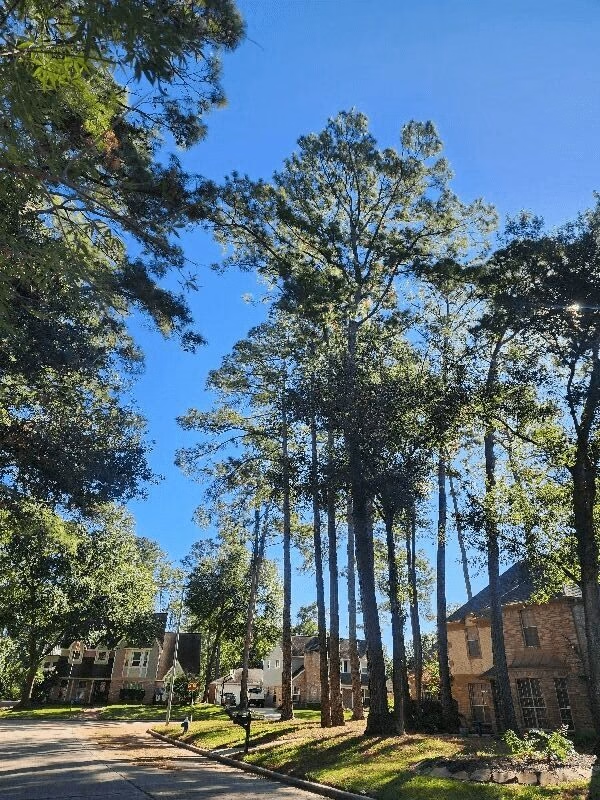When it comes to mitigating global warming, how trees help combat climate change is one of the most critical topics in environmental discussions today. Trees are often referred to as the “lungs of the Earth”—and for good reason. Through photosynthesis, they capture carbon dioxide (CO₂), a primary greenhouse gas, and store it in their roots, trunks, and leaves. At the same time, they release oxygen back into the atmosphere, making them indispensable allies in the fight against climate change. In this comprehensive guide, we’ll explore why trees are such powerful carbon sinks, how they cool our environments, and what steps individuals and communities can take to maximize their climate benefits.
Table of Contents
- The Science of Carbon Sequestration
- Regulating Local and Global Temperatures
- Supporting Biodiversity and Ecosystem Health
- Preventing Soil Erosion and Flooding
- Urban Forestry: Boosting City Resilience
- Reforestation & Afforestation: Key Strategies
- How You Can Help: Practical Ways to Get Involved
- Conclusion
1. The Science of Carbon Sequestration
One of the primary ways trees help combat climate change is through carbon sequestration—the process by which trees absorb CO₂ from the atmosphere and store it in their biomass (trunks, branches, leaves, and roots).
- Photosynthesis 101: Trees take in CO₂ and water (H₂O), converting these into sugars for growth. Oxygen is then released as a byproduct, benefiting all oxygen-dependent life forms.
- Long-Term Storage: Forests store carbon for decades or even centuries. As a tree matures, it continues to lock carbon away, reducing the overall concentration of greenhouse gases in the atmosphere.
- Carbon Sinks vs. Sources: A healthy, growing forest acts as a “carbon sink,” absorbing more CO₂ than it releases. However, deforestation and forest degradation turn these vital carbon sinks into “sources,” releasing stored carbon back into the atmosphere.
2. Regulating Local and Global Temperatures
Aside from absorbing CO₂, trees also help regulate temperatures—both locally and globally.
- Transpiration and Shade: Trees release moisture through their leaves in a process called transpiration, which cools surrounding areas. Additionally, tree canopies provide shade that can reduce the urban heat island effect in cities.
- Albedo Effect: Forested areas generally have a lower albedo (reflectivity) compared to bare land, meaning they absorb more sunlight. However, this effect is usually offset by the cooling power of transpiration and carbon sequestration—especially in tropical and temperate forests.
- Climate Buffer: On a larger scale, extensive forests can help stabilize weather patterns by influencing precipitation cycles and atmospheric moisture distribution.
3. Supporting Biodiversity and Ecosystem Health
Healthy forests teeming with diverse species aren’t just aesthetically pleasing; they’re essential to how trees help combat climate change on multiple fronts.
- Habitat Provision: Forests house countless species of plants, animals, fungi, and microorganisms. The more biodiverse a forest is, the more resilient it tends to be against diseases, pests, and changing climate conditions.
- Pollination & Seed Dispersal: Animals that live in these habitats pollinate flowers and disperse seeds, ensuring forest regeneration and longevity.
- Resilience to Climate Shifts: Diverse forests can better adapt to or bounce back from climate extremes like droughts, heat waves, and storms.
4. Preventing Soil Erosion and Flooding
Trees aren’t just useful for capturing carbon; they also play a vital role in soil and water conservation.
- Root Systems: Tree roots anchor soil in place, reducing erosion caused by heavy rains and wind. This is especially important in mountainous or hilly regions where landslides are a threat.
- Rainfall Interception: Forest canopies intercept rainfall, slowing its descent to the ground and allowing more water to seep into the soil, thus replenishing groundwater. This process lowers the risk of floods and helps maintain consistent water flow in rivers.
5. Urban Forestry: Boosting City Resilience
Urban areas are particularly vulnerable to the effects of climate change, including heat waves, poor air quality, and flooding. Urban forestry initiatives demonstrate how trees help combat climate change right in our backyards.
- Heat Island Mitigation: By providing shade and releasing moisture, urban trees can lower local temperatures, reducing the need for air conditioning and easing strain on power grids.
- Air Pollution Reduction: Leaves filter pollutants like nitrogen oxides (NOₓ), sulfur dioxide (SO₂), and particulate matter, improving air quality in densely populated neighborhoods.
- Aesthetic & Social Benefits: Tree-lined streets enhance mental well-being, encourage outdoor activities, and generally make cities more livable.
6. Reforestation & Afforestation: Key Strategies
Two major pathways to harness how trees help combat climate change are reforestation and afforestation.
- Reforestation: Restoring forests in areas where they have been recently cut or degraded. These initiatives help revive lost habitats, enhance carbon absorption, and reduce biodiversity loss.
- Afforestation: Planting trees in regions where forests did not previously exist. While this can be beneficial, it’s important to ensure that the chosen species are ecologically appropriate and not invasive.
- Challenges & Considerations: Factors like species selection, soil conditions, and local climate must be taken into account for projects to be sustainable. Additionally, involving local communities ensures long-term success.
7. How You Can Help: Practical Ways to Get Involved
Wondering how trees help combat climate change and how you can make a difference? Here are a few practical steps:
- Plant Native Trees: Participate in community tree-planting drives or start in your own backyard, choosing species that thrive in your region.
- Support Conservation Groups: Donate to or volunteer with organizations dedicated to protecting existing forests and promoting sustainable forestry.
- Reduce Paper & Wood Waste: Opt for digital solutions over paper when possible, and purchase wood or paper products certified by reputable sustainability standards (e.g., FSC, PEFC).
- Advocate for Policy Change: Urge local representatives to implement afforestation and reforestation programs, and support legislative measures that curb deforestation.
- Educate and Inform: Share information about how trees help combat climate change with friends, family, and online networks to inspire collective action.
Conclusion
Trees stand at the frontline of our battle against global warming, offering a potent, natural defense through carbon sequestration, temperature regulation, and ecosystem preservation. Understanding how trees help combat climate change empowers individuals, communities, and policymakers to invest in strategies that protect, restore, and expand our forests. By nurturing trees—whether in rural forests or urban parks—we take a significant step toward securing a healthier, more sustainable future for generations to come.




